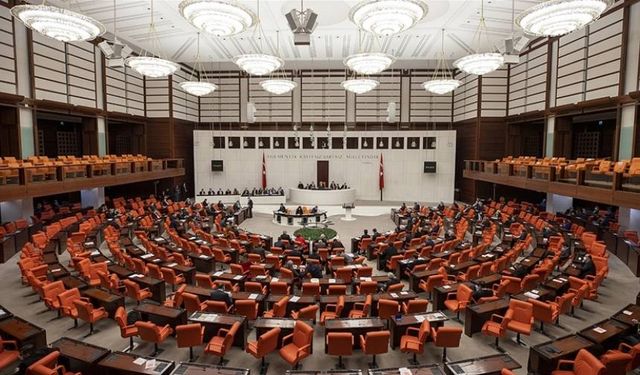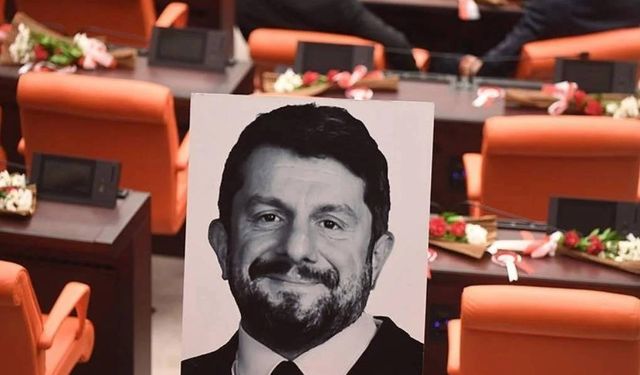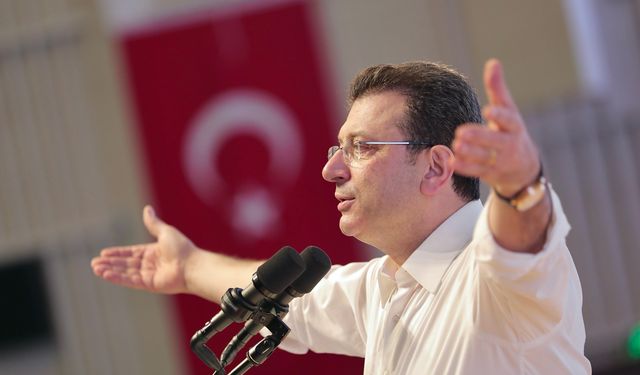Results of the “Research on 10-Year Gender Equality Report of Effie Award Winning Turkish Television Commercials”, conducted by Bahçeşehir University and Association of Advertisers (RVD), has been announced in the Crystal Apple Awards. We compared the results with domestic behavior profiles in Turkey and inquired subject matter experts on the results, industry-based causes for gender inequality in commercials, and potential actions against gender inequality.
#dokuz8/Burak Kaya
Results of the “Research on 10-Year Gender Equality Report of Effie Award Winning Turkish Television Commercials”, where the Association of Advertisers and Bahçeşehir University collaborated to review 489 Effie awarded commercials between 2007-2018, have been published. According to the results, Turkish TV commercials do not pass the gender equality test; the number of male main characters double the number of female main characters.
INEQUALITY IN GENDER DISTRIBUTION OF MAIN CHARACTERS IS ALSO OBSERVED IN PRODUCT CATEGORIES
With female characters constituting only 35 percent of television commercials, women are almost never represented in electronics, automotive, telecommunication and finance industries. Automotive and finance commercials feature male characters at 83 percent and 94 percent, respectively. Female characters are more common in industries such as cleaning, care and cosmetics; 94 percent of cleaning commercials and 63 percent of cosmetics commercials feature female characters.
GRAPH 1 Research on 10-Year Gender Equality Report of Effie Award Winning Turkish Television Commercials October 2018 The purpose of this research is to present the forms of representation of gender roles on winning TV commercials in 9 Effie Awards held between 2007-2018, and the shift in such representations during the decade. Research Abstract Researchers Dr. Gül Şener & Dr. Eda Öztürk (Coordinators), Dr. Önder Yönet & Dr. Hande Bilsel (Supervisor), BAU Department of Advertising Faculty Members / Research Data Range: 2007-2018 / Total number of TV commercials under analysis: 489 / TV commercials with main characters: 369 / TV commercials with voiceovers: 403
“COMMERCIALS DO NOT REFLECT THE DIVERSITY IN DAILY LIFE”
Research co-coordinator Dr. Eda Öztürk, Bahçeşehir University Faculty Member, has stated the following by emphasizing that advertisements portray female and male representations from daily life which are similar to consumers since advertisement is a form of commercial communication: “The need to convey the message effectively within a limited time is the reason why the use of some stereotypes is rationalized. It should be noted here that the change in gender roles with respect to femininity and masculinity is not being represented enough in advertisements. Advertisements, which are said to reflect life and society, fall behind in reflecting the diversity in daily life.”
“OUR PURPOSE IS TO ENCOURAGE A MORE EQUAL AND PLURALIST GENDER REPRESENTATION”
Research co-coordinator Dr. Gül Şener, Bahçeşehir University Faculty Member, states the following by underlining the importance of equal and pluralist gender representations in advertisements: “One of the main objectives RVD Platform of Gender Equality in Advertising, where Bahçeşehir University is a stakeholder, is to determine the measurable performance criteria to ensure gender equality in advertising. One of the most significant elements of this transformation is certainly the mechanisms that generate principles. For instance, European Advertising Standards Alliance (EASA) is one of the corporate bodies which implement the control systems you mentioned. Also, the Advertising Self-Regulatory Board in Turkey (RÖK) is both represented at the board of EASA and is among the stakeholders of the platform. Therefore, there are plans for taking self-regulatory steps toward gender equality in advertising in Turkey as well in the near future. Some studies have already been initiated regarding the issue. Not only the industry, but the academy should also adopt a gender-equal perspective and prepare course contents accordingly. Individual efforts of academicians are certainly very valuable, but these efforts can only become permanent in a corporate structure.”
“IT WILL TAKE US A WHILE TO COME ACROSS ANY COMMERCIAL WHERE A MAN DOES THE IRONING”
With her vast experience as copywriter/creative director at world’s leading global advertising agencies for many years and as a Faculty Member at Kadir Has University Faculty of Communication Advertising Department since 2009, Serpil Yıldız Özdemir highlights that advertisements are shifting and undergoing transformation like the society due to the rapidly increasing conservatism in Turkey and male and female roles becoming more sharply defined in time: “We will not be watching any man doing the ironing on a commercial at least in the near future. Most brands will avoid any oppositional or revolutionary positioning that will contradict with the society (target audience) because they need to profit to survive. They will not position themselves like non-governmental organizations which have social responsibilities. Even in social responsibility projects, companies will not ignore socially sensitive topics and the political atmosphere.”
[infogram id="translate-effie-reklamlarinda-kadin-1h9j6q5kedwv6gz" prefix="27g"]
“BRANDS SHOULD TAKE RISK, BUT…”
Özdemir further states that brands should take risks, but this is not likely yet: “It is not that easy for brands which are stuck between economic crises, severe competition and technological innovations to steer the society and raise awareness. In the 90s, when I was an advertising junior, many brands would conduct much more meaningful projects in this regard. However, other than Filli Boya and several other brands, there is unfortunately no brand that will invest money, effort and time for such a mission today.”
89 PERCENT OF COMMERCIAL VOICEOVERS ARE MEN Female voiceovers are hardly used in commercials; 89 percent of voiceovers are men. Asst. Prof. Perrin Öğün Emre from Kadir Has University Faculty of Communication Department of Advertising says “Women are in a disadvantageous position from the Turkish Parliament, where the country is represented, to various private sector corporations. Men should stop speaking on behalf of women.” Emre also adds that discrimination is not only a problem in the sector, but a social and political issue as well. Research co-coordinator Öztürk, on the other hand, stresses that everyone, without exception, should take responsibility to ensure gender equality as advertising is a multi-stakeholder structure involving advertisers, advertising agencies, research companies, media companies, media and sector organizations. While answering our question on whether there is any positive change, Asst. Prof. Emre mentions the inspiring examples on a global basis: “Actually, there are considerable efforts. There is a worldwide trend among global brands to feature the success stories of noncelebrity women. Women object to traditional patterns by telling their stories themselves in the campaigns of brands like Nike and Dove. Besides, brands develop slogans such as #Girlscan #LikeAGirl movements that protest the policies implemented against women’s bodies. The stronger women become, the more they are able to raise their voice. By featuring real, confident, brave women who break taboos, brands engage in brand activism in some way. Brands gain value when they address such social issues in their communication strategies. For now, such actions are limited in number, yet they are quite valuable. Advertisements are also the instruments that lead to the reestablishment of existing patterns. The limits of the means of communication they employ draw the limits of their own world. Therefore, we should be careful about the construction of male identity. It should be the responsibility of not only the professional organizations, but all stakeholders on a macro and micro level to present a gender-equal division of labor and support the use of a language that will not reproduce universal acceptances that involve discrimination.”
NO SIGNIFICANT CHANGE IN THE LAST DECADE
According to the research, there has not been any significant change in the advertising landscape in the last decade. In other words, while Turkey breaks world record with daily TV viewing time of 330 minutes, TV commercials are still far from contributing to gender equality.
“ADVERTISERS ACTUALLY DO NOT ACT IN BAD FAITH”
Companies that publish advertisements that do not display gender equality actually do not act in bad faith, says Dr. Aybike Serttaş, Faculty Member of İstinye University Department of Radio, TV and Cinema, and author of “Sexism on Television: An Analysis on Advertising Campaigns”: “Sexism has spread on all layers of the system regardless of age, education or profession. We are constantly bombarded with sexist codes both during interpersonal communications in daily life and various media products – TV series, commercials, TV shows, news – and, of course, movies. From proverbs to folk songs, from leading role of TV series to news presenters… we encounter examples of sexism in everyone and everywhere. All these data are transmitted to the perception of the individual who starts socializing starting from early ages and are later coded and converted into attitude and behaviors. This is what normalizes sexism.”
“WE QUESTION ALL THESE ISSUES AT THE ACADEMY”
Mentioning that students are not only taught the technical and aesthetical aspects of media production, but also media criticism, Serttaş says that advertisements, news, TV series, TV shows and movies must be examined in detail and their ethical problems should be put under discussion. Serttaş adds: “All these efforts will certainly bear their fruits in the end. Because nothing can resist change.”
OTHER STRIKING RESULTS OF THE RESEARCH
- Women are portrayed as married two times more than men
- Women are portrayed as housewives in 33 percent of advertisements
- Although 31 percent of female main characters are portrayed as employed between 2016-2018, none of them are shown at the workplace
- Men are portrayed as authority figures on TV commercials at 26 percent
RESEARCH RESULTS ARE PARALLEL TO TURKEY’S POSITION IN THE WORLD
Turkey’s 10-year gender equality report as presented by advertisements is parallel to Turkey’s position in the world in equality between man and woman. According to the 2017 Global Gender Gap research of World Economic Forum covering 144 countries, Turkey ranks 131st among 144 countries with respect to equality of opportunity for women.
[infogram id="translate-turkiyenin-toplumsal-cinsiyet-esitliginde-dunya-siralamasi-1h0r6rw5yxll4ek" prefix="KOK"]
THESE RESULTS MAY ARISE FROM DOMESTIC BEHAVIOR ITSELF
On the other hand, the research on Gender and Woman Perception in Turkey conducted by the academicians of Kadir Has University in 2016 gives hints about how the roles we encounter on commercials have their roots in families, and even in our childhood.
[infogram id="translate-babanin-evdeki-islere-ve-cocuk-bakimina-katkisi-cocuklara-bicilen-roller-1hxj48qegj7q4vg" prefix="Vk5"]
Asst. Prof. Perrin Öğün Emre from Kadir Has University Faculty of Communication Department of Advertising states that the portrayed roles received from mass communication media support the reconstruction of existing gender patterns: “As described by Gerbner in the Cultivation Theory on the basis of television, mass media may influence people’s perceptions as the new storyteller. Various contents such as news, advertisements, TV series, shows contribute to this storytelling. Designated male and female roles in messages are delivered to us by means of these contents. Also, the Research on Gender and Woman Perception in Turkey presents the roles of mother and father within family. While the woman plays the principal role in housekeeping, she also tries to keep up with childcare due to the insufficient support she receives from her spouse. However, men should consider their role as a requirement of division of labor in family rather than helping their spouses. Usually, men are defined with their success and power in work life, while women are portrayed with their affection and self-devotion. According to research data, girls younger than 15 are adapted to the role of ‘little mother’ as a result of the domestic responsibilities attributed to them, while boys are pushed out of the house, mobilize and are even allowed to work starting from early ages. Humans become subject to such gender constructs as soon as they are born. In a mindset where the concept of family is glorified with femininity, roles attributed to woman are worshipped and women’s principal role is identified with motherhood by means of conservative codes, it would not be quite realistic to expect the gap between genders to close soon. However, elimination of all these traditional obstacles and dominant social pressures that women face will be possible via equitable and transparent policies to be developed again by women.”
Translation: Nilay Iğdır












